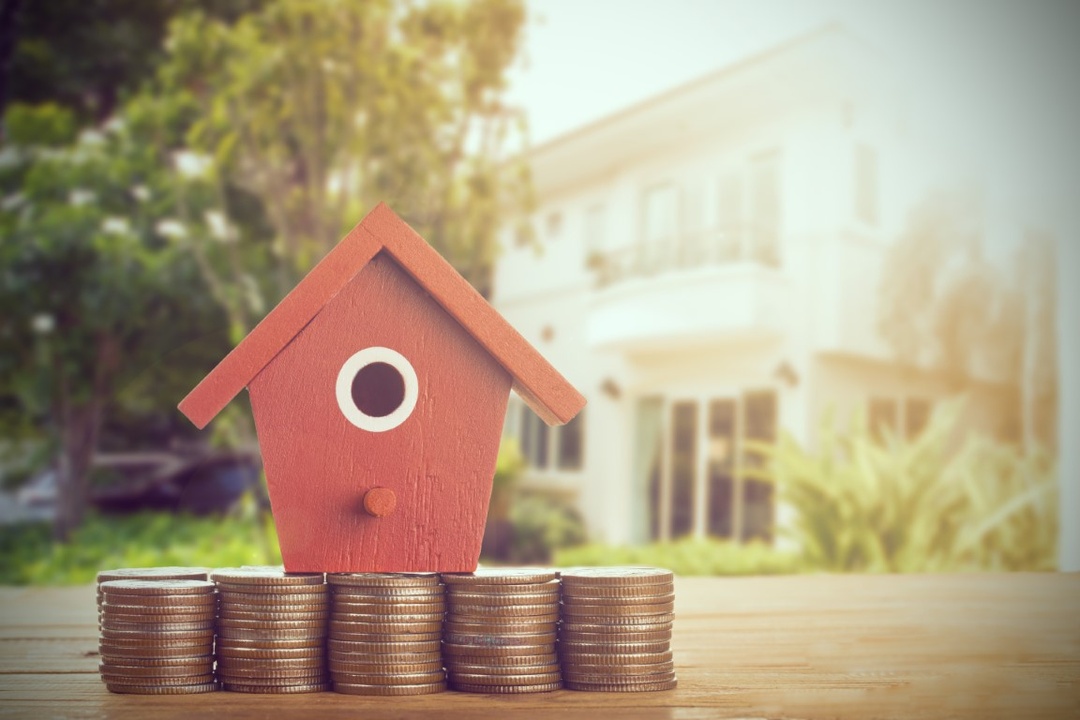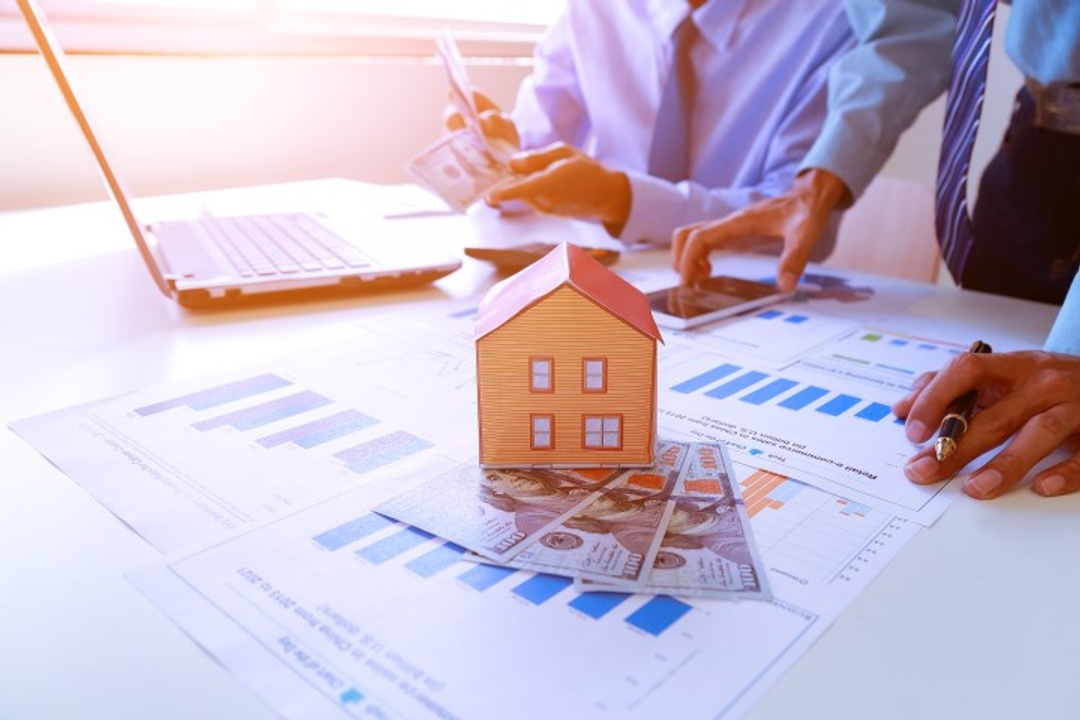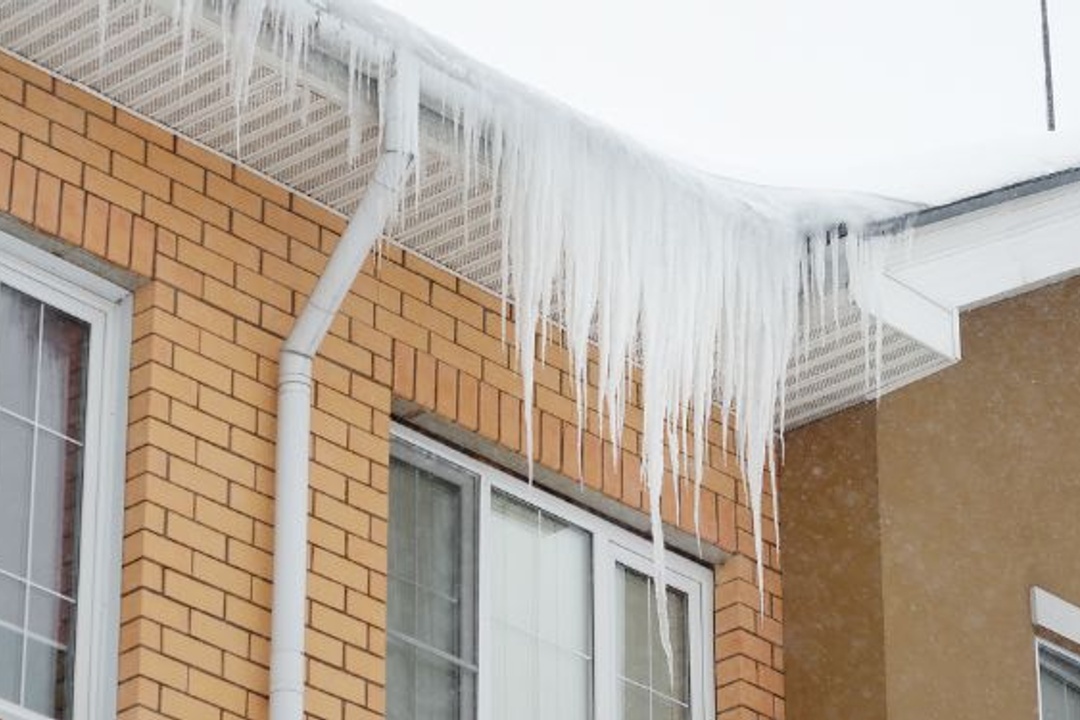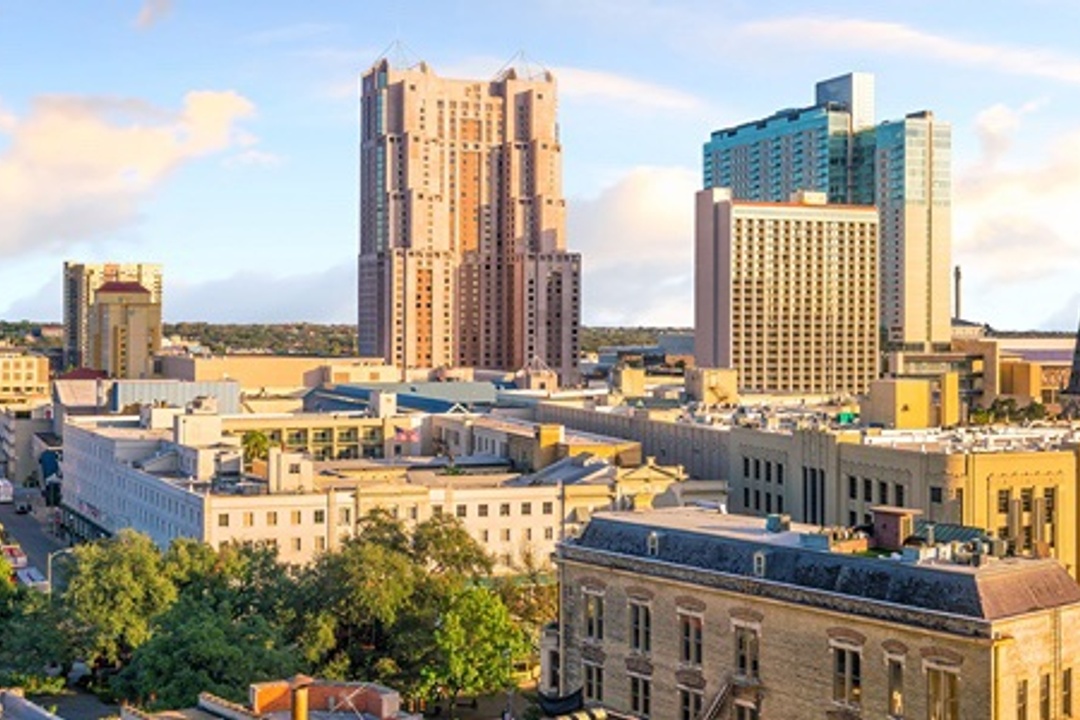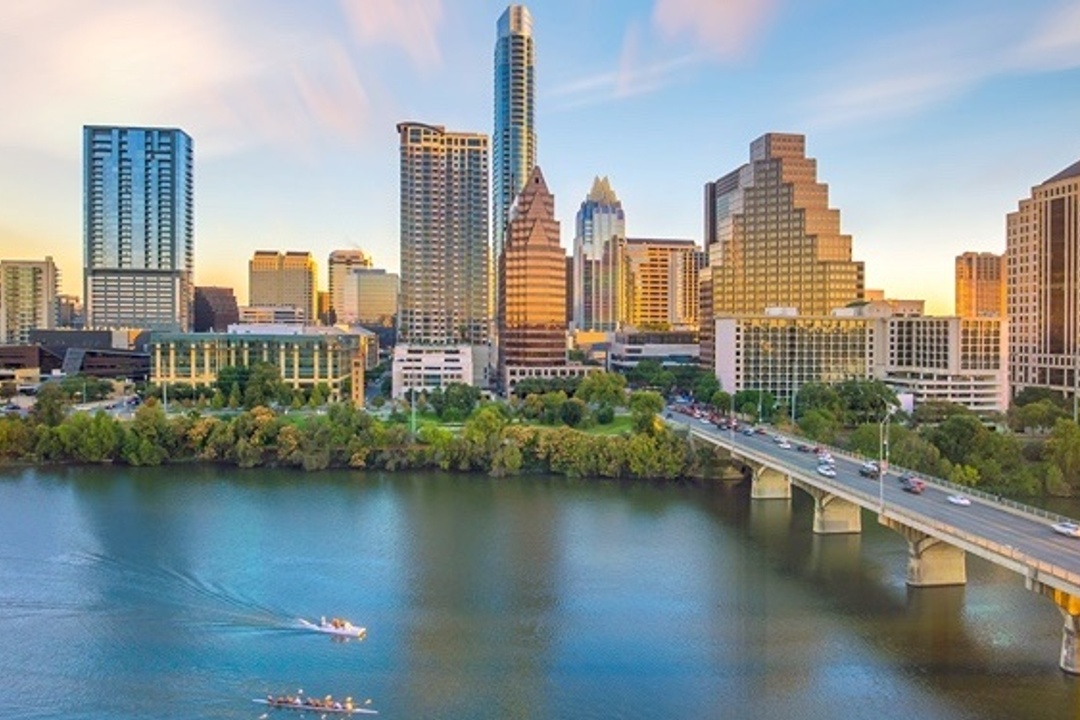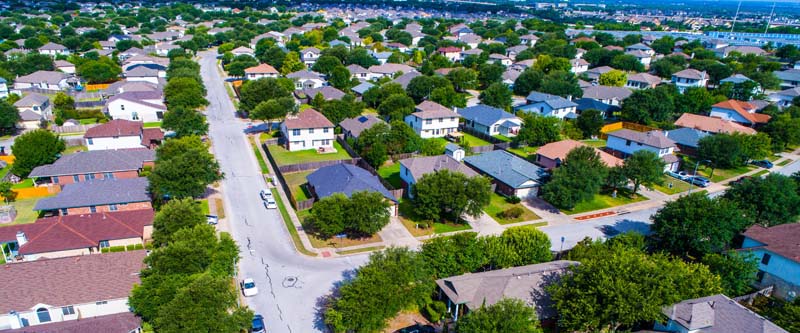
With its booming diverse economy, skyrocketing population growth (nearly 35 percent in the previous decade), and reputation as the “Live Music Capital of the World,” it’s little wonder Austin’s residential and commercial real estate business is thriving!
All of these factors (not to mention receiving the top rank for “Best Places to Live,” by U.S. News & World Report for the third time in a row!) make the city of Austin suitable for real estate investors looking to put money into Austin real estate and enjoy a consistent stream of income while also accumulating long-term wealth for the future.
If you are a first-time real estate investor thinking about purchasing Austin real estate, we’ve put together important tips to put you on the right path and ensure your best chance for success. Keep reading to learn more about the Austin housing market, the best areas to invest in Austin, and reasons to invest in Austin in 2022 and beyond.
Austin Real Estate Market Trends
Today's Austin housing market dynamics are mostly the outcome of the COVID-19 pandemic which brought about various signs that have fundamentally transformed the real estate sector for the greater part of two years.
Most significantly, local real estate has grown outrageously pricey. Few markets in the country have seen property values rise faster than Austin. Travis County saw the third-largest year-over-year increase in median pricing at the end of last year.
The one-sided seller's market drove many prospective buyers to the rental market, where prices have risen in a corresponding manner. The migration of buyers from the housing market to the rental market increased demand for rentals and is expected to continue for the foreseeable future.
As a result, astute Austin real estate investors should prioritize long-term rental property acquisitions. The recent increase in demand and rent should offset higher acquisition costs and allow for years of positive cash flow.
You can read our article on how the Austin real estate market has changed over the last few years.

Types of Austin Investment Properties
There are numerous aspects to consider while investing in Austin, TX real estate. The type of home you select will be determined by your budget, lifestyle, and requirements. In this section, we will look at the benefits and drawbacks of various types of homes in Austin, TX.
1. Single-family Home
Single-family residence means any building situated on one lot with a single dwelling, and sharing no common wall, foundation, or other interconnection with another dwelling unit or other structure or use.
Pros
* Privacy. Since single-family homes usually sit on a parcel of private property and don’t share walls, you or your tenants will have a high level of privacy.
* More space. Single-family homes tend to be bigger than multi-family dwellings. They also typically have more storage space.
* More exterior options. Single-family homes make it easier to personalize the landscaping.
Cons
* Higher prices. Single-family homes often cost more than other types of properties. This is especially true if you’re buying a home with a lot of land.
* Less income potential. It’s hard to deny that multi-family homes have more income potential than single-family homes.
* More responsibility. Unless your single-family home is part of an HOA community that provides basic services, you’ll have to hire help to deal with maintenance and repairs — or do it all yourself.
2. Multi-family Home
A multi-family home is a single building that’s divided to accommodate more than one family living separately. They can range from a duplex, which has two dwellings within a single building, to homes or small apartment buildings with up to four individual units. (Buildings with more than four units are typically considered commercial properties.)
Pros
* Cash Flow. One of the reasons investors like multifamily property is for the cash flow it generates each month. Rents are predictable and in strong markets like Austin, units can be turned over easily and re-leased to ensure steady cash flow year in and year out.
* Passive Income. Investing in multi-family real estate is a great way to generate additional income without lifting a finger. It is easy to hire a property manager who will take on the day-to-day responsibilities for you.
* Lowered Risk. A multifamily property is considered a relatively “safe” investment compared to other real estate asset classes. That’s because even during an economic downturn, people need somewhere to live.
Cons
* Management Intensity. Although property management can be outsourced, that doesn’t mean that multifamily isn’t management intensive. A multifamily property means dealing with many individual leases, different tenants who have various repair and maintenance requests, tenants who prefer to communicate in different ways, pay their bills differently, etc
* Cost. Depending on where you’re looking to invest in Austin, multifamily properties can be really expensive. In fact, this is one of the largest barriers to entry for most newbie investors. In Austin, the cost of a multifamily apartment building may range from hundreds of thousands of dollars to over a million dollars.
* Competition. Since multifamily property tends to draw interest from more experienced investors. This can create intense competition for multifamily property, and effectively, shuts many novice investors out of the market. And with most multifamily property investors offering cash, it can be quite hard to beat especially as a new investor seeking mortgage financing.
3. Retail Property
Retail property types are properties used to market and sell consumer goods and services. This category includes single-tenant retail buildings, small neighborhood shopping centers, larger centers with grocery store anchor tenants, and "power centers" with large anchor stores.
Pros
* Higher Rents. Owners of commercial properties command higher rents from their tenants than landlords of commercial properties. Because commercial properties are usually larger, in more central locations, and often with more extensive services and resources than residential properties, they are more valuable than houses where people live.
* Longer Leases. Another advantage of investing in a commercial property is that commercial property can attract long-term leases, which may be extended to 3-5 years or more. If you secure stable and reliable long-term tenants such as large corporations, organizations, government departments, etc., you can sit back and relax for years to come.
Cons
* Zoning. Commercial properties are more strictly zoned and regulated than residential properties. If a property is zoned for a particular use, for example, manufacturing, and the owner wants to rent it to someone who has another use in mind aside from a manufacturing-related business, zoning regulations may prevent this from happening.
* Economically Vulnerable. Commercial properties are more vulnerable to the vagaries of the economy than residential properties. Businesses are more volatile than residences and can go under and stop paying rent when the economy slows.

6 Reasons to Invest in Austin Real Estate
Austin is expanding rapidly and shows no signs of slowing down. Because of its continued growth, Austin is a natural hot spot for real estate investors. Keep reading to find out six reasons why you should consider investing in Austin real estate in 2023.
1. The Job Market Is Strong
Austin has always been a hot spot for big technology companies, but the pandemic made the area even more desirable. The city had the second-best performing job market in the country in 2021, adding nearly 50,000 jobs in that time. The following companies have either moved or are moving to the Austin area within the next few years:
* Samsung
* Apple
* Tesla
* Charles Schwab
This is just a shortlist of the companies moving to the area. With large companies taking over, it means thousands of people moving to Austin will need housing, making it a great time to invest in the area.
2. Occupancy Rates Are High
No one wants to rent in an area where occupancy rates are low, but that’s not an issue in Austin. Occupancy rates have always been high in Austin since it’s always been a hot area, but it’s gotten even more alluring in recent months.
A hot real estate market means fewer vacancies, and in many cases, it also means longer leases or the possibility of tenants renewing their leases. As a new investor in the area, this is music to your ears. Finding and keeping tenants is often the most challenging part of renting properties, so a high occupancy rate is reason enough to buy in Austin.
3. Renters Can Afford More
Austin is in a unique position. With the incredible job market growth, there’s been an onslaught of highly educated people coming in, all of whom need a place to live. This is great news for investors because it means one thing: they can charge higher rent. And because Austin is such an amenity-filled area, people are willing to pay more for rent, of course within the market’s average rent.
4. Austin Foreclosure Rates Are Low
As an investor, the last thing you want to see is high foreclosure rates. That’s often a sign of a lack of appreciation or lack of employment, making it hard to afford mortgage or rent payments, and causing a landlord to foreclose.
Austin has always boasted low foreclosure rates, and even through the pandemic, they’ve had an average 0.4 percent foreclosure rate versus the 1.6 percent national average foreclosure rate. This is a good sign that values stay high, employment is steady, and people in the area pay their bills.
5. Healthy Economy
The majority of the Austin real estate market’s strength is owed to the city’s thriving economy and consequently healthy job sector. Austin has become a hub for large businesses and great careers, especially in the tech industry, which has a positive impact on the city’s economic performance.
Employment rates are rising, and job growth rates are expected to reach a 12% increase in the Austin area in the next five years. Moreover, unemployment rates have also improved. The Austin metro area’s unemployment rate fell to 2.7% in March 2022, the lowest levels since the start of the pandemic.
Not only does Austin have a healthier unemployment rate, but experts also believe it will only continue to improve, which without a doubt will contribute to the population growth and the supply and demand within the housing market.
6. Population Growth
The positive economic and employment outlook affects population growth— more employees and people who need jobs are attracted to the city. Austin added more than 171,000 people between 2010 and 2020, according to the US Census. The metro population increased by 3% per year in that time, for a total population growth of 34%. The metro area’s population is estimated to double in the next 20 years to 4.5 million. Those numbers reinforce the fact that many feel that Austin is the place to be.
The healthy job sector is not the only factor contributing to Austin’s population growth. Austin is one of the top Green Cities with plenty of outdoor activities. This is a lifestyle that many people are seeking, especially millennials who have already recognized Austin as one of the top destinations to relocate to, and now represent 31.3 percent of the city’s population.

Expert Tips to Consider When Investing in Austin Real Estate
1. The General Real Estate Market
Buying low and selling high, as with other forms of investments, is a solid strategy. Real estate markets fluctuate, so staying on top of trends is essential. Are house prices rising or falling? Which locations are doing well and which aren’t? Are interest rates up or down? Which property types are performing and which are failing? Adequate research will help you avoid making mistakes in the property-choosing process.
When studying the Austin real estate market, it is important that you search for the latest trends and statistics on the following:
* Home sales and pricing (overall and in your desired market)
* New development
* Mortgage rates Property inventory
* Activity involving flipping
* Foreclosures
2. Expected Cash Flows and Profit Opportunities
Cash flow refers to how much money is left after expenses. Positive cash flow is key to a good rate of return on an investment property. Develop projections for the following modes of profit and expenses:
* Expected cash flow from rental income (inflation favors landlords for rental income)
* Expected increase in intrinsic value due to long-term price appreciation.
* Benefits of depreciation (and available tax benefits)
* Cost-benefit analysis of renovation before sale to get a better price
* Cost-benefit analysis of mortgaged loans vs. value appreciation
3. Valuation of the Property
Property valuation is important for financing during the purchase— listing price, investment analysis, insurance, and taxation—they all depend on real estate valuation. Below are some of the commonly used real estate valuation methods:
* Sales comparison approach: recent comparable sales of properties with similar characteristics— most common and suitable for both new and old properties
* Cost approach: the cost of the land and construction, minus depreciation— suitable for new construction
* Income approach: based on expected cash inflows— suitable for rentals

4. Leverage
Loans are convenient, but they may come at a big cost. You commit your future income to get utility today at the cost of interest spread across many years. Be sure you understand how to handle loans of this nature and avoid high levels of debt or what they call over-leverage.
Even experts in real estate are challenged by over-leverage in times of adverse market conditions and the liquidity shortages with high debt obligations can break real estate projects. Depending upon your current and expected future earnings, consider the following:
* Decide on the type of mortgage that best fits your situation— fixed-rate, adjustable-rate mortgage (ARM), interest-only, zero down payment, etc. Note that each type of mortgage has its own risk profile and you need to study each carefully.
* For instance, ARM includes mortgage rates that can change at any time driven by capital market forces and the borrower must accept any rate changes during the loan term.
* Be aware of the terms, conditions, and other charges levied by the mortgage lender.
* Shop around to find lower interest rates and better terms.
5. New Construction vs. Existing Property
New construction usually offers attractive pricing, the option to customize, and modern amenities. Risks include delays, increased costs, and the unknowns of a newly-developed neighborhood. Existing properties offer convenience, faster access, established improvements (utilities, landscaping, etc.), and in many cases, lower costs.
Here are some key things to look for when deciding between new construction or an existing property:
* Review past projects and research the construction company's reputation for new investments.
* Review property deeds, recent surveys, and appraisal reports for existing properties.
* Consider monthly maintenance costs, outstanding dues, and taxes. Costs such as these can severely impact your cash flow.
* When investing in leased property, find out if the property is rent-controlled, rent-stabilized, or free-market. Is the lease about to expire? Are renewal options favorable to the tenant? Who owns the furnishings?
* Quality-check items (furniture, fixtures, and equipment) if these are to be included in the sale.
Just like any investment, it's important to consider certain factors, like the ones listed here, before you invest in real estate— whether you opt for physical property, REITs, or something else.
6. Property Location
The adage "location, location, location" is still king and continues to be the most important factor for profitability in real estate investing. Proximity to amenities, green space, scenic views, and the neighborhood's status factor prominently into residential property valuations. Closeness to markets, warehouses, transport hubs, freeways, and tax-exempt areas play an important role in commercial property valuations.
A key when considering property location is the mid-to-long-term view regarding how the area is expected to evolve over the investment period. For example, today’s peaceful open land at the back of a residential building could someday become a noisy manufacturing facility, diminishing its value. Thoroughly review the ownership and intended usage of the immediate areas where you plan to invest.
One way to collect information about the prospects in the vicinity of the property you are considering is to contact the town hall or other public agencies in charge of zoning and urban planning. This will give you access to long-term area planning and help you make a determination of how favorable or unfavorable your plan for the property is.

Best Areas to Invest in Austin
Austin, Texas has one of the best real estate markets in the nation. The strong job market, natural outdoor beauty, excellent school districts, and laid-back lifestyle entice renters and homeowners to flock to this city in the Lone Star State. In this section, we have picked out five promising areas for those aspiring to invest in Austin.
1. Cedar Park
Average Days on the Market: 47 Days
Average Monthly Rent: $1,768/month
Median Home Value: $594,315
School District: Leander ISD
Population: 48,937 per U.S. Census Data
When it comes to city life and serene green settings, Cedar Park offers it all. Cedar Park, located 17 miles from downtown Austin, is a charming community that has something for everyone.
With a population of 79,000, Cedar Park residents enjoy easy access to greenbelt settings, community amenities, golf courses, top-rated schools, and various employers situated in North Austin. Cedar Park is one of Austin's largest suburbs, with lots of single-family homes ideal for real estate investors targeting families.
Cedar Park boasts a variety of activities, including the HEB Center at Cedar Park, which holds anything from rap concerts to rodeos, as well as the Texas Stars, a minor league affiliate of the NHL's Dallas Stars. The new $1 billion, 133-acre north Austin Apple facility, which will begin operations with 5,000 employees next year, will ensure continued expansion.
2. Leander
Average Days on the Market: 38 Days
Average Monthly Rent: $1,800/month
Median Home Value: $533,199
School District: Leander ISD
Population: 60,613
Leander is one of the United States' fastest-growing cities today. Its population has risen to more than 65,000 over the years. People migrate to the neighborhood for a variety of reasons, including the highly ranked Leander Independent School District, proximity to many employers in north Austin, and access to major city amenities.
Leander, like Cedar Park, provides people with convenient access to Lake Travis. Individuals can swiftly make their way to sites like Volente Beach or The Oasis to catch the sunset over the water. Leander rental properties lease faster than any other suburb or broad region in Austin, Texas, with an average time on the market of only 38 days.
When you consider that Leander is made up of 87.5% single-family homes, you have a local market that is appealing to investors wishing to store wealth in rental properties. Because 89.7% of single-family houses have three or more bedrooms, Leander's population is primarily made up of families.

3. Georgetown
Average Days on the Market: 34 days
Average Monthly Rent: $1,809/month
Median Home Value: $530,887
School District: Georgetown ISD
Population: 75,470
Georgetown, Texas is located north of Austin along I-35. The average market rent for a property in Georgetown, Texas is $1,809 per month. With a composition make-up of 77% single-family houses, Georgetown offers a robust, blooming community for folks looking for a nice area to live. And being named the fastest expanding city in America, it is evident that the growth of Georgetown, Texas makes owning real estate in Georgetown a good long-term investment.
Georgetown, Texas combines small-town charm with big-city convenience. It's a typical theme in Austin to have strong school districts throughout the metropolitan region, and Georgetown Independent School District provides a great place for parents wishing to settle with their family for their child's future. Georgetown is also the home of the prestigious Southwestern University, which attracts excellent graduates from across the country.
4. Manor
Average Days on the Market: 34 Days
Average Monthly Rent: $1,414/month
Median Home Value: $408,361
School District: Manor ISD
Population: 15,376
Manor, Texas is located on the east side of Austin and is easily accessible from the city through U.S. 290. Investors wishing to buy rental properties in Manor, Texas may expect a monthly market rent of $1,414 on average.
Manor, Texas, with 89% single-family houses, has an appealing inventory for investors wishing to invest in Manor SFRs. Manor, with only 15,376 residents according to recent census data, has lagged behind the rest of the area in population growth during the last decade. Having said that, Manor has seen a surge in population due to lower real estate prices and easy access to the rest of Austin.
And, given Austin's ongoing growth, it appears that all new developments must head north or east of the city due to a scarcity of land available in other directions. With Lake Travis to the west, we anticipate that Manor, Texas will benefit from a thriving Austin, Texas, and the development that will result.
5. Pflugerville
Average Days on the Market: 35 days
Average Monthly Rent: $1,805/month
Median Home Value: $482,237
School District: Pflugerville ISD
Population: 63,610
Pflugerville is a neighborhood that house buyers and real estate investors have grown to adore, and it's a place where investors usually see a lot of success. The typical market rent for single-family rental properties in Pflugerville is around $1,805 per month. Pflugerville, with 83% single-family houses, offers a unique opportunity for real estate investors looking to buy rental properties in Austin, Texas.
Indeed, the average days on market for houses in Pflugerville across Austin's whole MLS system is 59 days. Compared to Austin, which is now 75 days, owning rental properties in Pflugerville can be a wise investment if you want to own property in the greater Austin, Texas area.
Real estate investors interested in Pflugerville rental houses will benefit from a number of aspects. Great education systems, a huge tenant pool resulting in lower vacancy rate, and a higher percentage of families with three or more members resulting in tenants with more long-term tenant potential.
Best Homes for Sale in Pflugerville
Austin investment properties are appearing more and more like a wise choice for investors looking to add to their portfolio as the city's population continues to soar and major, minor, and independent businesses are drawn to the area by its favorable tax laws and significantly better economy.
Partnering with an experienced Austin real estate company like BHGRE HomeCity, if you feel it's the appropriate move, can streamline the process and provide you access to much larger projects, allowing you to spend less time working for your money and more time putting it to work for you.


